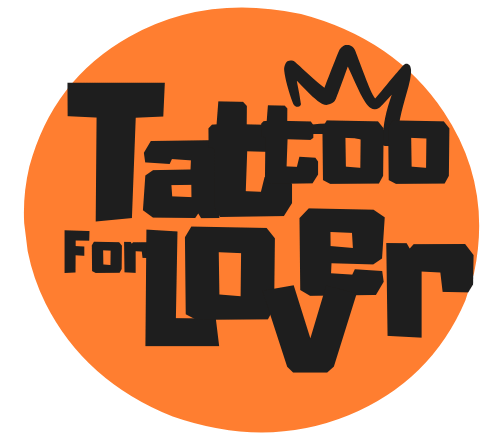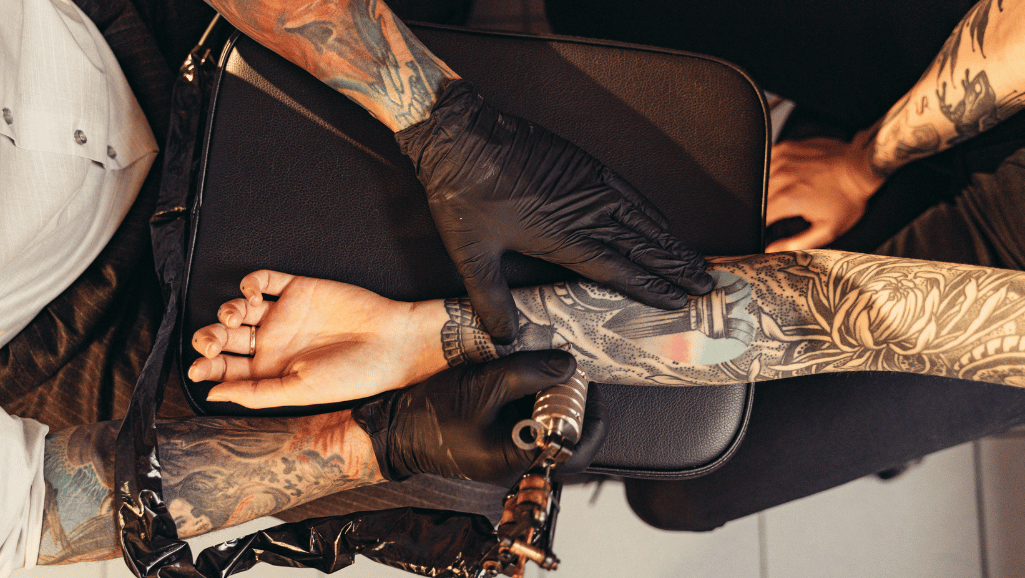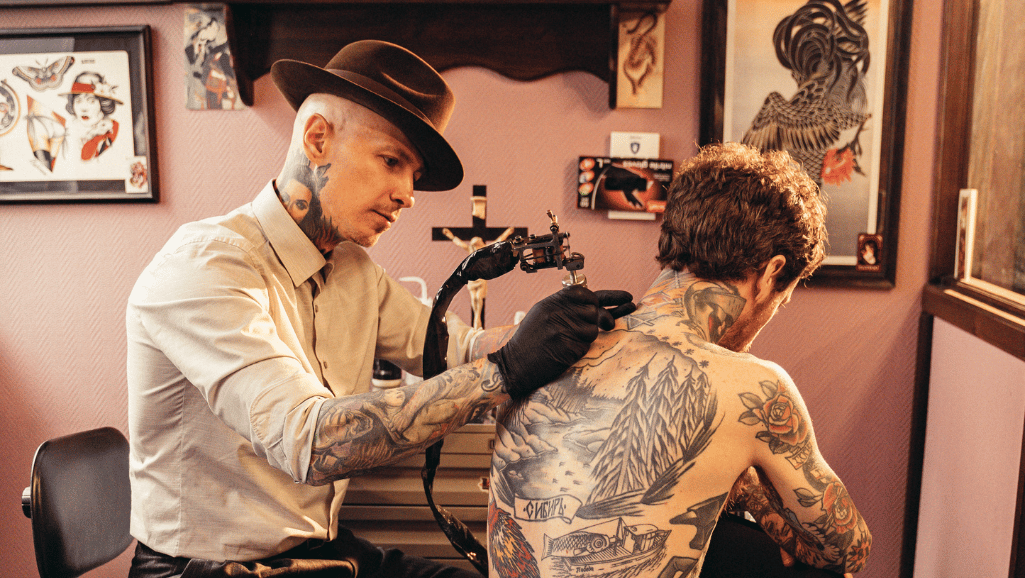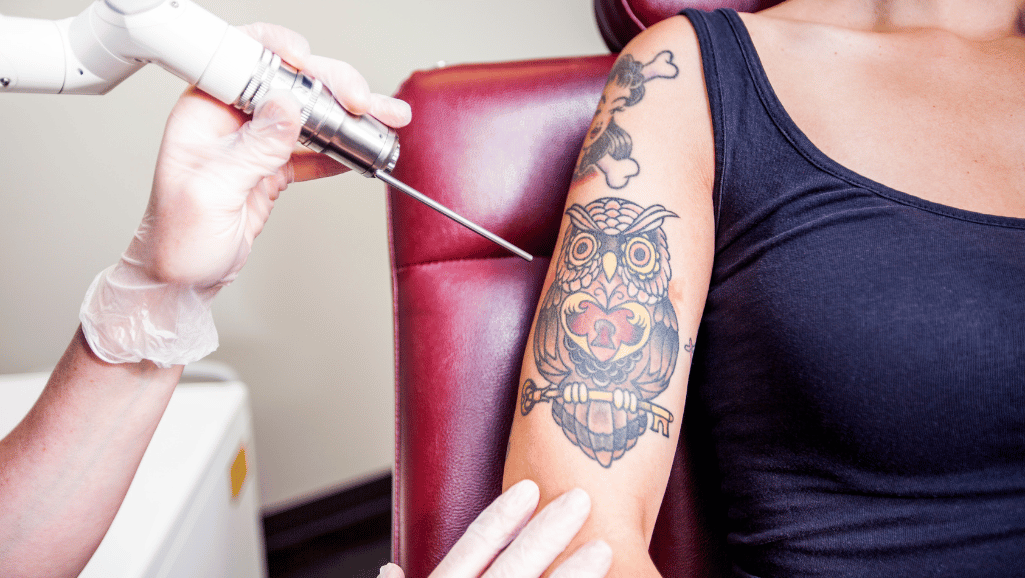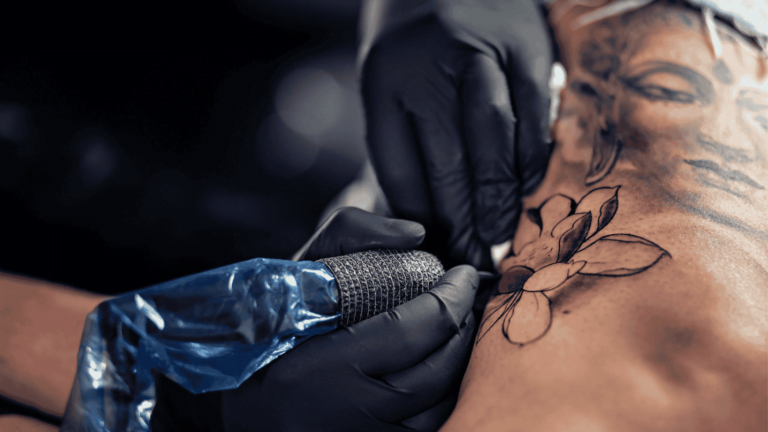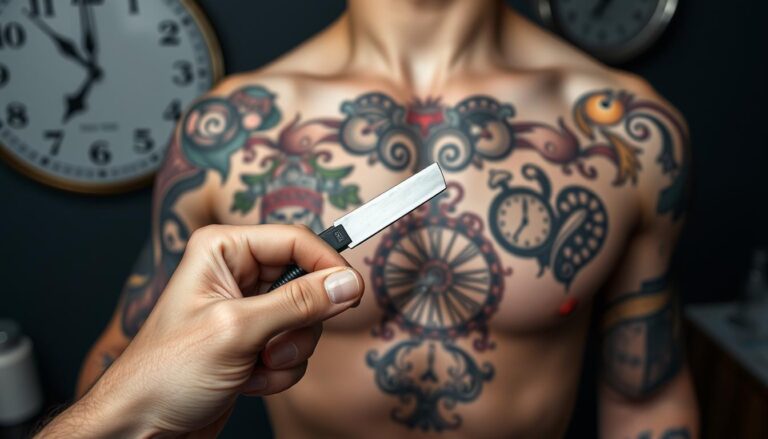Tattoos are a form of self-expression and art, but sometimes, we may have second thoughts about our ink choices. Whether it’s because of changing preferences or simply a desire for a fresh look, the option to tattoo over a removed tattoo is a common consideration. But is it really possible? Let’s uncover the truth.
The process of tattooing involves depositing ink deep into the dermis layer of the skin, making it a permanent mark. However, if you regret a tattoo, there are alternatives to either removing it entirely or covering it up with a new design.
While tattoo removal through laser treatments is an effective option, some individuals may prefer to re-ink over a removed tattoo. But before diving into this process, it’s vital to understand the challenges that come with it.
One of the main challenges lies in the visibility of darker tattoos under lighter ones. This can affect the overall appearance and may require additional layers of ink to effectively conceal the old design. Furthermore, changes in skin tone can impact the final result of a cover-up tattoo.
Consulting with a skilled tattoo artist is crucial when considering re-inking over a removed tattoo. They can evaluate the situation, discuss cover-up options, and design a new tattoo that effectively camouflages the old one.
Key Takeaways:
- Regretting a tattoo doesn’t mean you’re stuck with it. Tattoo cover-up or removal are available options.
- Re-inking over a removed tattoo is possible but comes with challenges like visibility of darker tattoos and changes in skin tone.
- Consulting with a skilled tattoo artist is essential for effective tattoo cover-up or design.
- Laser tattoo removal is another option for completely removing a tattoo.
- Consider your personal preference and desired outcome before deciding between tattoo cover-up or removal.
How Tattoos are Made
Tattoos come in two main types: temporary and permanent. While temporary tattoos only color the epidermis and fade away within a few days or weeks, permanent tattoos involve a more intricate process.
Permanent tattoos are created by depositing ink into the dermis layer of the skin. Skilled tattoo artists use an electrically powered needle that punctures the skin’s surface and injects ink into the deeper layers. The ink is deposited nearly half a millimeter below the skin’s surface, ensuring its longevity and visibility.
This tattooing process can be painful and may cause some discomfort. However, it allows the ink to be embedded in the skin for a lifetime. The permanence of tattoos is a result of the ink’s deep placement and the body’s inability to naturally remove it.
Permanent tattoos are skillfully designed by tattoo artists who use their expertise to create intricate and meaningful designs. The tattoo ink, specifically formulated for this purpose, comes in an array of colors and shades. This allows tattoo artists to create vibrant, detailed, and personalized designs that speak to the client’s desires.
While permanent tattoos are designed to last a lifetime, there may be instances where individuals wish to remove or cover up their tattoos. In such cases, laser tattoo removal or tattoo cover-ups can be explored as viable alternatives.
Can You Tattoo Over a Removed Tattoo?
While it might seem logical to tattoo over a removed tattoo to completely hide it, there are challenges to consider. Dark tattoos can still be visible under lighter-colored tattoos, and the ink from the old tattoo can affect the appearance of the new tattoo. Additionally, skin-colored tattoos are not effective for covering up dark tattoos. Skin tone changes can also impact the appearance of a cover-up tattoo. It is important to consult with a skilled tattoo artist who can assess the situation and provide recommendations for effectively covering up a removed tattoo.
To understand the challenges of tattooing over a removed tattoo, it’s important to consider the visibility of the old tattoo and the potential discoloration of the skin. Dark tattoos, even after removal, may still show through lighter-colored tattoos. The ink from the previous tattoo can affect the color and clarity of the new tattoo, creating a less desirable result.
Furthermore, skin tone changes can impact the appearance of a cover-up tattoo. If the skin undergoes discoloration due to the tattoo removal process or other factors, it can affect the overall look of the new tattoo, making it less effective in concealing the old tattoo.
A tattoo artist consultation is crucial in determining the best tattoo cover-up options. An experienced and skilled tattoo artist can assess the visibility of the old tattoo, the condition of the skin, and provide expert guidance on the most effective approach. They can recommend design elements and techniques that will effectively conceal the removed tattoo, taking into account factors such as color, size, and placement.
It is essential to remember that not all tattoos can be effectively covered up. In some cases, complete tattoo removal through laser treatments may be the best option. A tattoo artist who specializes in cover-up tattoos can provide valuable insight into the feasibility of covering up a removed tattoo and guide individuals towards the most appropriate course of action.
| Challenges of Tattooing Over a Removed Tattoo | Tattoo Cover-Up Options |
|---|---|
| Visibility of old tattoo under new tattoo | Complete tattoo removal through laser treatments |
| Discoloration of skin | Consultation with a skilled tattoo artist for cover-up recommendations |
| Ink from old tattoo affecting the appearance of new tattoo | Consideration of design elements and techniques for effective concealment |
When considering tattooing over a removed tattoo, it is crucial to consult with a skilled tattoo artist who understands the challenges and can provide expert guidance. Their expertise can ensure the best possible outcome, whether it involves covering up the removed tattoo or exploring other tattoo options.
Tips for Updating and Modifying Tattoos
If you’ve decided against completely covering up a removed tattoo and want to breathe new life into it instead, there are various options available to update and modify your existing ink.
One effective way to refresh an old tattoo is by adding color. By incorporating vibrant pigments, you can instantly brighten and revitalize your artwork, making it look newer and more eye-catching.
Another popular option is to enlarge the tattoo or add more details to enhance its design. This can modernize the overall look and create a more intricate and visually appealing piece.
If you’re fond of quotes or verses, consider integrating them into your existing tattoo. The addition of meaningful words can update the style and personalize the artwork further.
To ensure the best results, it’s crucial to consult with a skilled tattoo artist who specializes in tattoo updates and modifications. They will guide you through the process, recommend suitable changes, and bring your vision to life.
Examples of Tattoo Updates and Modifications:
Laser Tattoo Removal as an Alternative
Laser tattoo removal is a highly effective option for completely removing a tattoo. **Laser tattoo removal** utilizes advanced technology to target and break down tattoo ink particles, allowing the body’s immune system to naturally eliminate them. Q-switched nanosecond lasers and picosecond lasers are commonly used in the tattoo removal process.
The lasers emit high-energy pulses that shatter the tattoo ink into tiny fragments, which are gradually absorbed by the body over time. Different laser wavelengths are required to target different tattoo colors. The effectiveness of laser tattoo removal depends on various factors such as the size, color, and depth of the tattoo.
Professional tattoos generally require more sessions for complete removal compared to amateur tattoos due to the higher quality and deeper ink placement. The number of sessions required for tattoo removal varies depending on individual factors and the specific tattoo.
In some cases, individuals may opt for laser tattoo removal to fade a tattoo for future modification or correction. The process can significantly lighten the appearance of the tattoo, making it easier to cover up or alter with a new design. Consulting with a qualified professional is crucial to determine the number of sessions needed for tattoo removal based on the specific characteristics of the tattoo.
Overall, laser tattoo removal serves as a viable alternative for those seeking complete tattoo removal or fading. It is a precise and effective method that can provide individuals with a fresh canvas for new artwork or a faded tattoo for modification.
Benefits of Laser Tattoo Removal:
- Complete removal or fading of tattoos
- Precision targeting of specific tattoo colors
- Opportunity for tattoo modification or cover-up
- Minimized scarring compared to other removal methods
- Ability to adjust the depth and power of laser treatment
Considerations for Laser Tattoo Removal:
- Individual tattoo characteristics
- Number of sessions required for optimal results
- Healing time and aftercare
- Potential side effects, such as temporary skin irritation
- Selection of a qualified professional with experience in laser tattoo removal
| Tattoo Removal Effectiveness | Number of Sessions Required |
|---|---|
| Amateur Tattoos | 3-6 sessions |
| Professional Tattoos | 6-12+ sessions |
| Tattoo Fading for Modification | 1-6 sessions |
Consulting with a qualified laser tattoo removal specialist is essential to discuss the specific needs and expectations associated with tattoo removal. They can provide personalized advice and guidance throughout the process, ensuring the best possible outcome.
Tattoo Removal Considerations and Process
When considering tattoo removal, there are several factors to take into account. The process of laser tattoo removal involves the use of high-energy laser beams that break down the tattoo ink, allowing the body to naturally eliminate it over time. However, before undergoing laser tattoo removal, it is important to consider the following:
- Tattoo Removal Considerations: The skin type, location of the tattoo, color of the tattoo, and amount of ink present can impact the number of sessions required for removal. Darker and more complex tattoos typically require more sessions compared to lighter and simpler designs.
- Laser Tattoo Removal Process: Laser tattoo removal typically requires multiple sessions spaced several weeks apart. During each session, the laser is used to target and break down the tattoo ink, allowing the body’s immune system to gradually eliminate it. The duration of each session and the total number of sessions required depend on various factors, including the size and colors of the tattoo.
- Anaesthetic Creams: Some individuals may choose to apply anaesthetic creams prior to the tattoo removal sessions to help minimize discomfort. These creams numb the skin, making the process more tolerable.
- Healing Time for Tattoo Removal: After each laser tattoo removal session, the treated area may experience redness, swelling, and scabbing. It is essential to follow the aftercare instructions provided by the tattoo removal specialist to ensure proper healing and minimize the risk of complications.
- Tattoo Removal Cost: The cost of tattoo removal can vary depending on various factors, including the size and complexity of the tattoo, the number of sessions required, and the geographical location. It is advisable to consult with a qualified tattoo removal specialist to discuss the cost involved and any potential financing options.
- Finding a Qualified Tattoo Removal Specialist: Laser tattoo removal should only be performed by a qualified and experienced professional. It is essential to research and choose a reputable tattoo removal specialist who uses the appropriate laser technology and can provide guidance and support throughout the removal process.
Taking into consideration these factors and consulting with a qualified tattoo removal specialist will ensure a safe and effective tattoo removal journey.
| Factors to Consider: | Tattoo Removal Process: |
|---|---|
| Tattoo size, color, and complexity | Multiple laser sessions required |
| Skin type and location of the tattoo | Laser breaks down tattoo ink |
| Use of anaesthetic creams | Body eliminates the broken down ink |
| Healing time and aftercare | Redness, swelling, and scabbing may occur |
| Tattoo removal cost | Cost varies based on size and complexity |
| Importance of finding a qualified specialist | Choose a reputable professional |
Cosmetic Tattoo Removal
Cosmetic tattooing is a popular choice for enhancing the appearance of features like eyebrows, eyeliner, and lips. However, if you decide to remove these cosmetic tattoos, laser tattoo removal can effectively eliminate them. At Victorian Cosmetic Institute, we offer specialized laser tattoo removal services for cosmetic tattoos.
When it comes to removing eyebrow and eyeliner tattoos, caution must be exercised due to the delicate and sensitive nature of the eye area. Laser tattoo removal can also temporarily remove hair, which may be a concern for eyeliner and eyebrow tattoos.
During the removal process, there might be a shift in color, making careful selection and test patching crucial before proceeding with the complete removal. It is advisable to consult with a qualified specialist who can assess your specific situation and provide personalized recommendations.
Here at Victorian Cosmetic Institute, our team of experienced professionals ensures the utmost care and precision in cosmetic tattoo removal. We understand the importance of achieving the desired outcome while maintaining the health and integrity of your skin.
Considerations for Cosmetic Tattoo Removal
When considering cosmetic tattoo removal, it’s essential to keep a few factors in mind:
- The delicate nature of the eye area when removing eyebrow and eyeliner tattoos
- The temporary removal of hair around eyeliner and eyebrow tattoos
- The potential shift in color during the removal process
- The importance of test patching before proceeding with a complete removal
By considering these factors and seeking guidance from a qualified specialist, you can make informed decisions about cosmetic tattoo removal and achieve the desired results.
| Cosmetic Tattoo Removal Considerations | Benefits |
|---|---|
| Delicate eye area | Safe removal of eyebrow and eyeliner tattoos |
| Temporary hair removal | Ensures precision while removing eyeliner and eyebrow tattoos |
| Color shift during removal | Allows for careful selection and evaluation before the complete removal process |
| Test patching | Ensures compatibility and reduces the risk of unwanted reactions |
Conclusion
When it comes to tattoo removal options, there are several considerations to keep in mind. Tattoo cover-up and modification can be challenging, but consulting with a skilled tattoo artist can help determine the best approach based on individual preferences and specific tattoo characteristics. Whether you choose to update and modify a removed tattoo or opt for complete removal through laser tattoo removal, it is crucial to weigh the effectiveness of each option.
Laser tattoo removal has proven to be highly effective in completely removing tattoos. However, it is essential to approach the process with proper consultation and consideration. Consulting with a qualified professional will ensure that the laser tattoo removal process is done effectively and safely. Additionally, this approach allows for fading a tattoo for future modification or correction.
In the end, the decision to tattoo over a removed tattoo or remove it completely depends on personal preference and desired outcome. Each option has its pros and cons, so it is important to carefully consider all factors before making a decision. Whether you choose to consult with a skilled tattoo artist or explore laser tattoo removal, the goal is to achieve the desired result and be satisfied with your new tattoo or the absence of one.
FAQ
Can you tattoo over a removed tattoo?
How are tattoos made?
What are the challenges of tattooing over a removed tattoo?
How can I update and modify my tattoos?
What is laser tattoo removal?
How many sessions are required for laser tattoo removal?
What should I consider for tattoo removal?
Can cosmetic tattoos be removed?
What are the tattoo removal options and considerations?
Forhad
Forhad's writing is not just about the artistry of tattoos or the latest trends in the industry; it's an exploration of the deep-rooted connections people have with their tattoos, reflecting personal narratives, cultural histories, and moments of transformation. Through a mix of in-depth features, personal narratives, and insightful analyses, he sheds light on the multifaceted nature of tattooing, revealing the emotional and cultural layers that lie beneath the surface.

